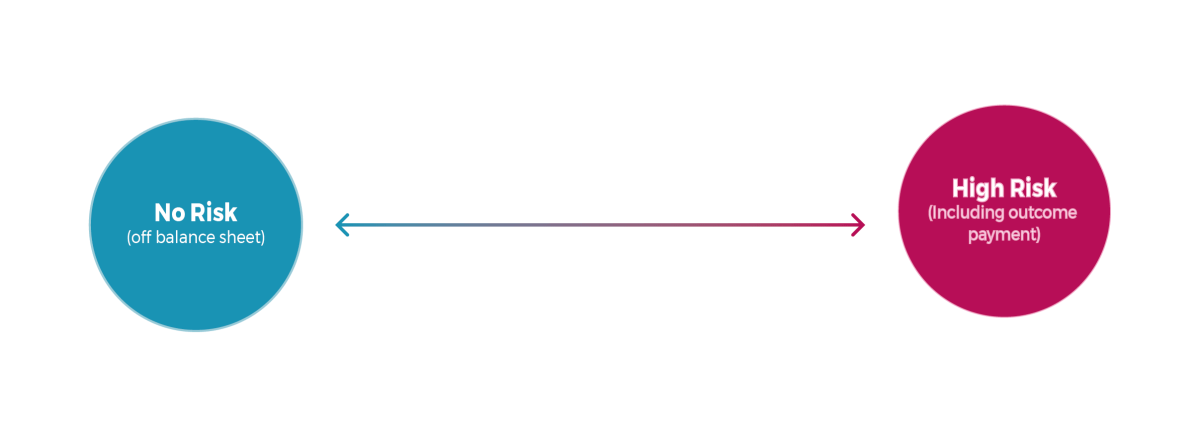What is the level of risk you’re willing to take on as an organisation? Your board and partners will help you with this decision, and it may be partially determined by the deal structure you choose (whether the SIB has a direct, managed or intermediary structure).
Here is a trade-off for you to consider: transfer all the risk to the investor and they will gain all of the potential upside from your successful provision, or take on some of the risk and earn a success fee/bonus if you succeed or even exceed expectations, which you can then reinvest into your programmes. Ask yourself:
- How much risk are we willing to take on?
- Who should gain if we overperform?
- Should some of that gain be transferred to us?
- How can we set the terms so that our continuous improvement during delivery leads to financial upside?
Continuum of risk acceptance, and potential reward
Developed by Big Society Capital

|
1. No risk / no share in reward |
|
|---|---|
|
No risk share other than reputational; a central overarching organisation holds risk and upside, and sub-contracts to service provider |
|
|
Example 1: Peterborough SIB (see Section 3.8 for detail)
|
Example 2: Essex SIB, Action for Children
|
|
2. Some risk / some share in reward |
|
|---|---|
|
Variation 1: Additional income if above threshold – e.g., provider has to achieve a minimum of £xM worth of outcomes; above this for every £100 of outcomes, organisation gains Example: DWP Innovation Fund SIBs
|
|
|
Variation 2: Provider partially funds intervention upfront and negotiates return with interest GLA Homelessness SIB, St Mungo’s
|
|
|
3. High risk / high share in reward |
|
|---|---|
|
Variation 1: Provider risks profit in return for variable loan interest rate depending on outcome; interest can be close to zero if outperforming |
|
|
Example 1: Thames Reach Rough Sleeping SIB
|
Example 2: Family Action SIB
|
|
Variation 2: Provider risks part of outcome payment, shares in the surpluses |
|
|
Example 1: It’s All About Me SIB
|
Example 2: Manchester SIB, Action for Children
|
Where along this continuum will you find yourself? Some questions to consider:
- How confident are we in our organisation’s ability to deliver or exceed the promised outcomes?
- Will our board be receptive to the idea of investing some money up front at risk, but with the chance of an upside?
- Does investing create any misalignment of interests, or unwanted complexity, in arrangements between the partners?
- Do we have a strong enough balance sheet to enable us to take on the risk in order to lower our interest rate?
- Are we keen to engage more in a relationship of equals or are we happy adopt a traditional ‘fundee’ role?

